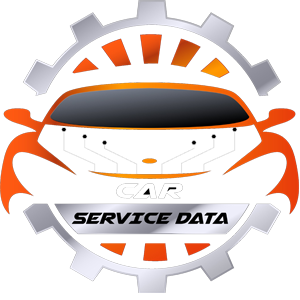What is an Exhaust Gas Recirculation (EGR) System?
Exhaust gas recirculation (EGR) is used to reduce the levels of NOx emitted by the engine. By recirculating exhaust gases into the engine’s cylinder, a percentage of the air is replaced with CO2. This helps lower combustion temperatures, reducing harmful emissions and improving efficiency.
How the EGR System Works:
1. The EGR Valve Opens – If conditions are right (engine warmed up, light-to-medium load), the ECU signals the EGR valve to open.
2. Exhaust Gases are Recirculated – A small percentage of exhaust gas (5–15% in gasoline engines, 25–40% in diesel engines) is redirected into the intake manifold.
3. Lower Combustion Temperature – The exhaust gases replace some oxygen-rich air, reducing peak combustion temperatures from 2,500°F (1,370°C) to a lower level.
4. Reduction of NOx Formation – NOx forms at high temperatures, lowering the temperature reduces its production.
Types of EGR Systems:
(1) Vacuum-Operated EGR – Found in older vehicles, controlled by engine vacuum pressure.
(2) Electronic EGR (Digital EGR) – Controlled by the ECU for precise operation.
(3) High-pressure grade (HP-EG) of diesel engines recycles the previous scan of the turbocharger.
(4) Low-Pressure EGR (LP-EGR) – Common in modern diesels, recirculates exhaust after the turbocharger.
(5) Cooler EGR Systems – Includes an EGR cooler that lowers the temperature of recirculated gases for better efficiency.
Benefits of an EGR System:
– Reduces NOx Emissions – Helps meet environmental regulations.
– Improves Fuel Economy – In some cases, reduces pumping losses and improves efficiency.
– Lowers Engine Temperature – Helps prevent excessive heat-related damage.
– Better Engine Performance in Diesels – Helps prevent knocking and improves turbo efficiency.
Common Problems in the EGR System:
1) Carbon Buildup in the EGR Valve or Passages – Can cause blockage, leading to performance issues.
2) EGR Valve Sticking (Open or Closed)
– Stuck Open: Too much exhaust gas enters, causing rough idling, power loss, or stalling.
– Stuck Closed: Higher NOx emissions, overheating, or knocking.
3) EGR Cooler Failure (Diesel Engines) – Can lead to coolant leaks and overheating.
4) Check Engine Light (CEL) On – A faulty EGR valve or sensor may trigger codes like P0400–P0409.
How to Fix and Maintain the EGR System:
>> Clean the EGR Valve & Passages – Use an EGR cleaner or manually remove carbon buildup.
>> Check for Clogged EGR Coolers – Ensure proper coolant flow in diesel engines.
>> Test the EGR Valve with a Scanner – Use an OBD-II tool to check if the valve is working correctly.
>> Replace the EGR Valve if Faulty – If cleaning doesn’t help, replace it with an OEM part.
>> Use High-Quality Fuel & Additives – Helps reduce carbon buildup over time.
Symptoms of a Bad EGR System:
>>>Rough Idle or Stall – If there are too many exhaust gases during circulation.
>>> Loss of power and poor acceleration – due to excessive or insufficient EGR flow.
>>> Increased Fuel Consumption – A malfunctioning EGR can disrupt combustion.
>>> Knocking or Pinging Sounds – When the EGR valve is closed, the combustion temperature will rise.
>>> Black Smoke from the Exhaust (Diesel Engines) – Indicates improper EGR function.
>>> Check Engine Light (CEL) On – Codes like P0401 (insufficient flow) or P0402 (excessive flow) may appear.
EGR vs. NO EGR (Delete or Disable EGR)
Some diesel owners delete or disable the EGR system to prevent carbon buildup and improve performance.
<1> Increase NOx emissions (harmful to the environment).
<2> Cause the engine to overheat in some cases.
<3> Make the vehicle fail emissions tests in certain regions.

